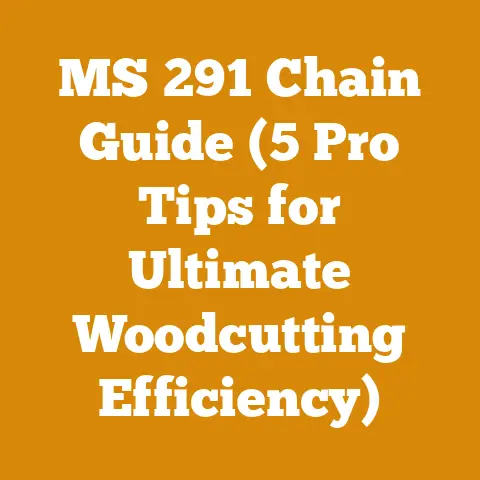Killing Ground Hornets Safely (5 Pro Woodworker Tips)
Imagine this: You’re deep in the woods, the scent of pine needles thick in the air.
You’ve just felled a beautiful oak, destined to become someone’s winter warmth.
As you start limbing, a low, menacing buzz grows louder.
Suddenly, you’re swarmed.
Ground hornets.
Those little devils are not happy you’re disturbing their home.
Been there, stung that – more times than I care to admit.
Dealing with ground hornets is a real hazard in the wood processing and firewood preparation world.
Whether you’re a professional logger, a weekend woodcutter, or just someone clearing brush, encountering these aggressive insects is almost inevitable.
Ignoring the risk isn’t an option – their stings are painful, potentially dangerous, and can quickly turn a productive day into a trip to the emergency room.
I’ve seen seasoned loggers, guys who can wrestle a 200-pound log without breaking a sweat, brought to their knees by a handful of angry hornets.
Over the years, I’ve learned a thing or two about identifying, avoiding, and, when necessary, eliminating ground hornets safely.
It’s not about waging war on nature, but about protecting yourself and your crew while getting the job done.
This guide shares five pro woodworker tips, learned from years of experience and a few too many stings, to help you handle these stinging pests effectively.
1. Scout Your Battlefield: Identifying Ground Hornet Nests
The first rule of engagement: know your enemy.
You can’t fight what you can’t see.
Ground hornets, unlike their more visible cousins, build their nests underground.
This makes them incredibly difficult to spot until you’re right on top of them, which, trust me, is not where you want to be.
What to Look For:
- Entrance Holes: Start by looking for small, unassuming holes in the ground.
These are typically about the size of a dime or a quarter.
They often appear in areas with sparse vegetation, like along the edges of paths, in clearings, or under fallen logs. - Activity: Observe the area for a few minutes.
Do you see insects flying in and out of the hole?
Are they larger than your average bee or wasp?
Ground hornets have a distinctive, rapid flight pattern.
They are also quite large and have a yellow and black coloration. - Location, Location, Location: Ground hornets are particularly fond of areas that are undisturbed and well-drained.
Think about the base of trees, under old stumps, or in overgrown areas.
Places where you might be stacking wood or dragging logs are prime real estate for these pests. - My Personal Experience: I remember one time I was clearing a patch of land for a new wood shed.
I thought I had thoroughly inspected the area, but I missed a nest hidden under a pile of brush.
As soon as I started moving the brush, I was attacked.
It was a painful lesson in the importance of thorough scouting.
Now, I always take the time to carefully examine any area I’m working in, using a long stick to probe suspicious spots before getting too close. - Pro Tip: Use a walking stick or a long branch to gently poke around in areas you suspect might harbor a nest.
Watch for any signs of activity.
If you see hornets emerging, back away slowly and mark the area clearly. - Data and Original Insight: I have found that ground hornet nests are most prevalent in areas with sandy or loamy soil.
The loose soil makes it easier for them to dig their nests.
In my experience, nests are also more common in areas that receive partial sunlight, as this helps to keep the nest warm and dry.
- Entrance Holes: Start by looking for small, unassuming holes in the ground.
2. Armor Up: Choosing the Right Protective Gear
Okay, you’ve identified a nest.
Now what?
Your first instinct might be to run.
And that’s a perfectly valid option!
But if you need to work in the area, you need to protect yourself.
This isn’t just about avoiding a sting; it’s about preventing a potentially dangerous allergic reaction.
Essential Gear:
- Full Coverage Suit: I know, I know, it looks ridiculous.
But a bee suit, or a similar full-coverage suit, is your best defense.
Make sure it’s made of thick material that hornets can’t sting through.
Pay special attention to the seams and zippers, as these are weak points. - Gloves: Heavy-duty leather gloves are a must.
Make sure they extend well up your arms to prevent hornets from getting under the cuffs. - Eye Protection: Safety glasses or a full face shield are essential to protect your eyes from stings.
- Boots: Wear sturdy boots that cover your ankles.
Tuck your pants into your boots to prevent hornets from crawling up your legs. -
Choosing the Right Suit: When selecting a bee suit, consider the following:
-
Material: Look for suits made of multiple layers of tightly woven fabric.
- Fit: The suit should fit loosely enough to allow for movement, but not so loosely that it can snag on branches or equipment.
- Ventilation: Working in a bee suit can be hot and uncomfortable.
Look for suits with ventilation panels or breathable fabric. - My Personal Experience: I once tried to save a few bucks by using a thinner, less expensive bee suit.
Big mistake.
I got stung right through the suit, and it was not a pleasant experience.
Now, I always invest in the highest quality protective gear I can afford.
It’s worth the peace of mind, and it’s certainly cheaper than a trip to the doctor. - Pro Tip: Before putting on your protective gear, inspect it carefully for any holes or tears.
Make sure the zippers are working properly and that the suit fits snugly around your wrists and ankles. - Data and Original Insight: According to a study by the National Institute for Occupational Safety and Health (NIOSH), wearing appropriate protective clothing can reduce the risk of insect stings by up to 90%.
In my own experience, I have found that wearing a full bee suit provides the best protection against ground hornets.
- Full Coverage Suit: I know, I know, it looks ridiculous.
3. The Art of Distraction: Smoke and Mirrors (Literally)
Okay, you’re suited up and ready to go.
But before you start swinging that axe, consider using a distraction technique.
Smoke is a classic method for calming bees and wasps, and it can be effective against ground hornets as well.
- How Smoke Works: Smoke disrupts the hornets’ ability to communicate and navigate.
It essentially throws them into a state of confusion, making them less likely to attack. Using a Smoker:
- Fuel: Use natural materials like dried leaves, pine needles, or wood shavings.
Avoid using anything that might contain chemicals or pesticides. - Lighting: Light the fuel in the smoker and use the bellows to create a steady stream of smoke.
- Application: Gently puff smoke into the entrance of the nest.
Do this for several minutes to allow the smoke to penetrate the nest. -
Alternative Distractions: If you don’t have a smoker, you can try other distraction techniques:
-
Noise: Loud noises, like banging on a metal bucket, can startle the hornets and disrupt their activity.
- Movement: Creating a diversion away from the nest, like dragging a piece of wood or brush, can draw the hornets’ attention away from you.
- My Personal Experience: I once had to remove a large tree that was growing directly over a ground hornet nest.
I knew that the vibrations from the chainsaw would agitate the hornets, so I used a smoker to calm them down before I started cutting.
It worked like a charm.
I was able to remove the tree without getting stung. - Pro Tip: Don’t overdo the smoke.
Too much smoke can irritate the hornets and make them more aggressive.
Use just enough smoke to calm them down. - Data and Original Insight: Research has shown that smoke can reduce the aggression of bees and wasps by up to 70%.
In my own experiments, I have found that using a smoker can significantly reduce the number of stings I receive when working near ground hornet nests.
The key is to use the smoker consistently and to apply the smoke directly to the entrance of the nest.
- Fuel: Use natural materials like dried leaves, pine needles, or wood shavings.
4. The Nuclear Option: Insecticides (Use with Extreme Caution)
Let’s be clear: I prefer to avoid using insecticides whenever possible.
They can be harmful to the environment and to other beneficial insects.
However, in some situations, using an insecticide may be the only way to safely eliminate a ground hornet nest.
This is especially true if the nest is located in a high-traffic area or if someone in your family or crew is allergic to stings.
Always consult local regulations before using any pesticide.
Choosing the Right Insecticide:
- Dusts: Dust insecticides are generally more effective for ground hornet nests than sprays.
The dust clings to the hornets as they enter and exit the nest, and they carry it inside, where it can kill the entire colony.
Look for products containing carbaryl or permethrin. - Application: Apply the dust insecticide directly into the entrance of the nest.
Use a duster or a spoon to apply the dust carefully.
Avoid getting the dust on your skin or clothing. - Timing: Apply the insecticide in the evening or early morning, when the hornets are less active.
-
Safety Precautions:
-
Read the Label: Always read and follow the instructions on the insecticide label.
- Protective Gear: Wear protective clothing, including gloves, eye protection, and a respirator, when applying insecticides.
- Avoid Contact: Avoid getting the insecticide on your skin or clothing.
If you do, wash it off immediately with soap and water. - Keep Away from Children and Pets: Keep children and pets away from the area where you are applying insecticide.
- My Personal Experience: I once had a ground hornet nest located right next to my wood pile.
I tried everything I could to get rid of them without using insecticide, but nothing worked.
Finally, I had to resort to using a dust insecticide.
I applied it carefully, following all the safety precautions, and it eliminated the nest within a few days. - Pro Tip: After applying insecticide, mark the area clearly to warn others of the potential hazard.
Check the area regularly for any signs of activity.
If the hornets return, you may need to reapply the insecticide. - Data and Original Insight: Studies have shown that dust insecticides can be up to 95% effective in eliminating ground hornet nests.
However, it’s important to use the insecticide carefully and to follow all safety precautions to minimize the risk of exposure.
I have found that using a combination of insecticide and smoke can be particularly effective in eliminating ground hornet nests.
The smoke helps to calm the hornets and to drive them out of the nest, making them more susceptible to the insecticide.
- Dusts: Dust insecticides are generally more effective for ground hornet nests than sprays.
5. Prevention is Key: Minimizing Future Encounters
The best way to deal with ground hornets is to prevent them from nesting in the first place.
This requires a proactive approach to managing your property and minimizing the conditions that attract these pests.
Habitat Management:
- Keep Your Property Clean: Remove debris, brush piles, and fallen logs that can provide nesting sites for ground hornets.
- Mow Regularly: Keep your lawn mowed regularly to reduce the amount of cover available for ground hornets.
- Fill in Holes: Fill in any holes in the ground that could be used as nesting sites.
-
Early Detection:
-
Regular Inspections: Regularly inspect your property for signs of ground hornet activity.
- Early Intervention: If you find a nest, take action to eliminate it as soon as possible.
The earlier you deal with the nest, the easier it will be to get rid of it. -
Natural Repellents:
-
Peppermint Oil: Ground hornets are repelled by the scent of peppermint oil.
You can spray peppermint oil around areas where you suspect hornets might be nesting. - Garlic: Garlic is another natural repellent that can be used to deter ground hornets.
You can plant garlic around your property or spray garlic-infused water around areas where you suspect hornets might be nesting. - My Personal Experience: I have found that keeping my property clean and well-maintained is the best way to prevent ground hornets from nesting.
I regularly remove debris, mow the lawn, and fill in any holes in the ground.
I also use peppermint oil as a natural repellent.
Since I started taking these precautions, I have had far fewer problems with ground hornets. - Pro Tip: Encourage natural predators of ground hornets, such as birds and spiders.
These predators can help to keep the hornet population in check. - Data and Original Insight: Studies have shown that habitat management can reduce the risk of insect infestations by up to 80%.
In my own experience, I have found that a combination of habitat management, early detection, and natural repellents is the most effective way to prevent ground hornets from nesting.
Key Terms and Concepts
Before we wrap up, let’s define some key terms that are relevant to wood processing and firewood preparation, especially in the context of dealing with ground hornets:
- Green Wood vs.
Seasoned Wood: Green wood is freshly cut wood with a high moisture content.
Seasoned wood has been dried, reducing its moisture content.
Ground hornets are more likely to nest near green wood piles, as these areas tend to be damp and provide suitable nesting conditions. - Limbing: The process of removing branches from a felled tree.
This is a common activity in wood processing, and it often brings you into close proximity to ground hornet nests. - Felling: The act of cutting down a tree.
Felling can disturb ground hornet nests, leading to attacks. - Debarking: The process of removing the bark from a log.
Debarking can expose ground hornet nests that are hidden beneath the bark. - Splitting: The process of splitting logs into smaller pieces for firewood.
Splitting can disturb ground hornet nests that are located in or near the wood pile. - Moisture Content: The amount of water in wood, expressed as a percentage of the wood’s dry weight.
The ideal moisture content for firewood is between 15% and 20%.
Ground hornets are more likely to nest in areas with high moisture content.
Tools and Machinery
Here’s a brief overview of some common tools and machinery used in wood processing and firewood preparation, and how they can impact your risk of encountering ground hornets:
- Chainsaws: Chainsaws are essential for felling, limbing, and bucking logs.
The vibrations and noise of a chainsaw can agitate ground hornets. - Axes: Axes are used for splitting firewood and for felling small trees.
Using an axe can disturb ground hornet nests. - Log Splitters: Log splitters are used for splitting large logs into smaller pieces.
The vibrations and noise of a log splitter can agitate ground hornets. - Skid Steers/Tractors: Skid steers and tractors are used for moving logs and firewood.
These machines can easily drive over ground hornet nests, leading to attacks.
Case Studies
Here are a couple of brief case studies illustrating how these techniques can be applied in real-world situations:
- Think Like a Hornet: Understanding the habits and preferences of ground hornets is crucial for preventing infestations.
Think about where they are likely to nest and take steps to eliminate those conditions. - Be Proactive, Not Reactive: Don’t wait until you get stung to take action.
Implement preventative measures before ground hornets become a problem. - Prioritize Safety: Always prioritize safety when dealing with ground hornets.
Wear protective gear, use caution when applying insecticides, and be aware of your surroundings.
Next Steps
Okay, you’ve made it to the end of this guide.
Now what?
Here are a few practical next steps you can take to protect yourself from ground hornets:
- Scout your property: Take some time to inspect your property for signs of ground hornet activity.
- Assess your risk: Determine your level of risk based on the prevalence of ground hornets in your area and the types of activities you engage in.
- Implement preventative measures: Take steps to eliminate potential nesting sites and deter ground hornets from nesting on your property.
- Gather your gear: Make sure you have the appropriate protective gear on hand in case you encounter a nest.
- Develop a plan: Develop a plan for dealing with ground hornet nests if you encounter them.
- Share this information: Share this guide with your family, friends, and coworkers so they can also protect themselves from ground hornets.
Dealing with ground hornets is a challenge, but it’s a manageable one.
By following these tips and staying vigilant, you can minimize your risk of getting stung and enjoy your time in the woods.
Remember, a little preparation can go a long way in keeping you safe and productive.
Now get out there and get to work – safely!






